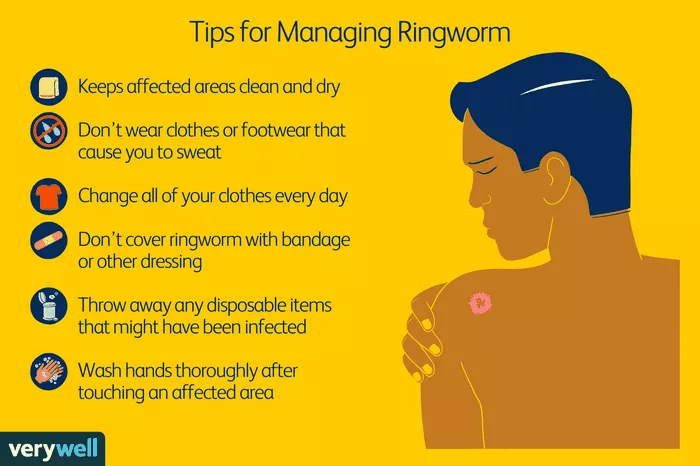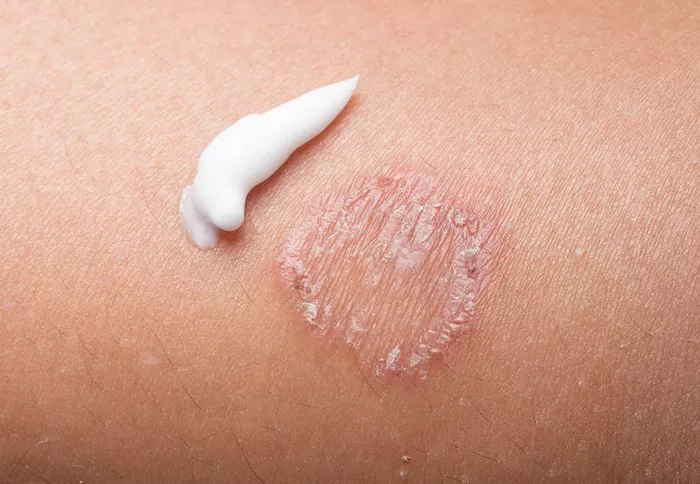Ringworm, despite its misleading name, is not caused by a worm but rather by a group of fungi known as dermatophytes. This common fungal infection can affect the skin, nails, and scalp, causing discomfort and embarrassment. Fortunately, with the right knowledge and treatment, ringworm can be effectively managed. In this comprehensive guide, we will delve into the nuances of ringworm, its causes, symptoms, and most importantly, explore the various treatment options available for individuals grappling with this fungal menace.
Unmasking the Culprit: What is Ringworm?
Ringworm, or dermatophytosis, is a highly contagious fungal infection that manifests on the skin, nails, and sometimes the scalp. Despite its name, there are no actual worms involved; the term “ringworm” is derived from the characteristic red, circular rash that often appears on the infected skin, resembling a ring. This fungal infection is caused by various species of fungi, including Trichophyton, Microsporum, and Epidermophyton.
Recognizing the Signs and Symptoms
Identifying ringworm early is crucial for effective treatment. The symptoms can vary depending on the affected area, but common signs include red, itchy, and scaly patches on the skin. The characteristic ring-shaped rash may have raised edges and a clear center. In some cases, ringworm can lead to hair loss or brittle nails, particularly when the scalp or nails are affected.
Understanding the Causes: How Does Ringworm Spread?
Ringworm is highly contagious and can spread through direct skin-to-skin contact with an infected person or animal. Additionally, sharing personal items such as towels, combs, or sports equipment can facilitate the transmission of the fungus. Fungal spores can also linger on surfaces, making it possible to contract ringworm from contaminated environments like locker rooms or public swimming pools.
Treatment Approaches: A Multi-Faceted Strategy
Effectively treating ringworm involves a multi-faceted approach that combines topical and systemic interventions. The choice of treatment depends on the severity and location of the infection. It is crucial to consult with a healthcare professional for a proper diagnosis and personalized treatment plan. Here are some common approaches to ringworm treatment:
1. Topical Antifungal Medications:
Topical antifungal creams, ointments, or powders are often the first line of defense against ringworm. These medications typically contain active ingredients like clotrimazole, miconazole, terbinafine, or ketoconazole. Application is usually recommended for several weeks, even after the visible symptoms have disappeared, to ensure complete eradication of the fungus.
2. Oral Antifungal Medications:
For more severe cases or infections that involve the scalp or nails, oral antifungal medications may be prescribed. These medications, such as griseofulvin, terbinafine, or fluconazole, work systemically to eliminate the fungal infection from within. It is crucial to follow the prescribed dosage and duration to achieve optimal results.
3. Antifungal Shampoos:
When ringworm affects the scalp, the use of antifungal shampoos becomes essential. Medicated shampoos containing ketoconazole or selenium sulfide can help control the fungal growth on the scalp and prevent the spread of infection.
4. Keep the Affected Area Clean and Dry:
Maintaining proper hygiene is crucial in preventing the spread and recurrence of ringworm. Clean the affected area regularly with mild soap and water, and ensure it is thoroughly dried afterward. Avoid sharing personal items and launder clothing, towels, and bed linens frequently, especially if they come into contact with the infected area.
5. Over-the-Counter (OTC) Remedies:
Some over-the-counter antifungal creams and powders may provide relief for mild cases of ringworm. However, it is essential to read and follow the instructions carefully, and if symptoms persist, seek professional medical advice.
Preventing Ringworm: Proactive Measures for a Fungus-Free Future
Prevention is as crucial as treatment when it comes to ringworm. Adopting certain habits and precautions can significantly reduce the risk of infection:
1. Practice Good Personal Hygiene:
Regular handwashing with soap and water is one of the simplest yet most effective ways to prevent the spread of ringworm. Encourage children to practice good hygiene, especially after playing with pets or in communal spaces.
2. Avoid Sharing Personal Items:
Steer clear of sharing personal items such as towels, combs, brushes, and sports equipment. This is particularly important in environments where people may come into close contact, such as gyms or communal showers.
3. Wear Protective Footwear:
Fungal spores can thrive in warm, damp environments like locker rooms and swimming pool areas. Wearing sandals or flip-flops in these places can help prevent direct contact with contaminated surfaces.
4. Keep Pets Healthy:
Animals, especially cats and dogs, can carry and transmit ringworm to humans. Regular veterinary check-ups, proper grooming, and maintaining a clean living environment for pets can help prevent the spread of the fungus.
5. Be Cautious in Public Spaces:
Exercise caution in communal spaces, particularly those with high humidity and moisture levels. Use a clean towel or personal mat when engaging in activities like yoga or exercise in shared environments.
Seeking Professional Guidance: When to Consult a Healthcare Professional
While mild cases of ringworm may respond well to over-the-counter treatments, it is crucial to consult a healthcare professional for proper diagnosis and guidance. Consider seeking medical attention in the following situations:
The infection persists or worsens despite home treatment.
The affected area is extensive or involves the face, scalp, or nails.
The individual is immunocompromised, pregnant, or breastfeeding.
There is uncertainty about the diagnosis or the presence of a secondary bacterial infection.
Conclusion
Ringworm, though common and often easily treatable, requires a proactive and informed approach for effective management. By understanding the causes, recognizing the symptoms, and adopting preventive measures, individuals can significantly reduce the risk of contracting and spreading ringworm. In cases where infection occurs, timely and appropriate treatment, guided by healthcare professionals, ensures a swift recovery and minimizes the likelihood of recurrence. Armed with knowledge and diligence, individuals can confidently face the challenge of ringworm, restoring health and well-being.



























